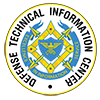SpaceX’s Falcon Heavy Rocket May Mean Big Savings for DoD
SpaceX’s successful static firing of its Falcon Heavy rocket Wednesday in preparation for the rocket’s expected maiden flight next month is important for the Department of Defense and the intelligence community. Why? It could lead to big savings. Today, United Launch Alliance, a joint venture between Lockheed Martin and Boeing, has a tight grip on









